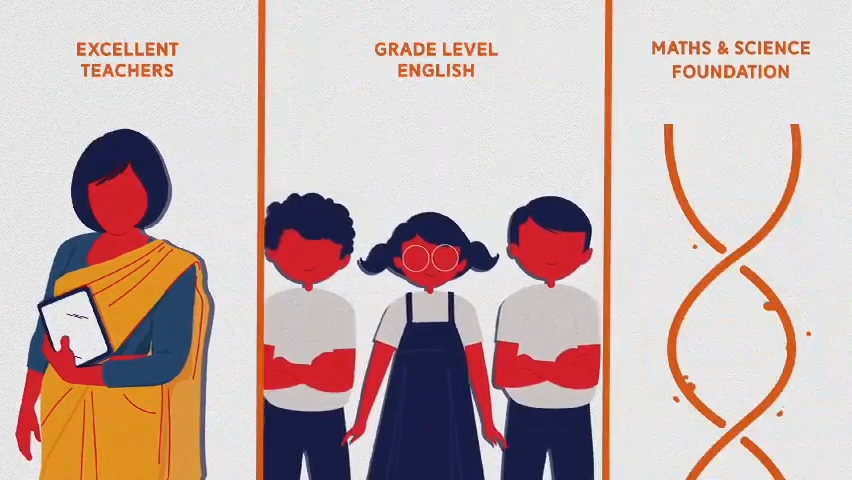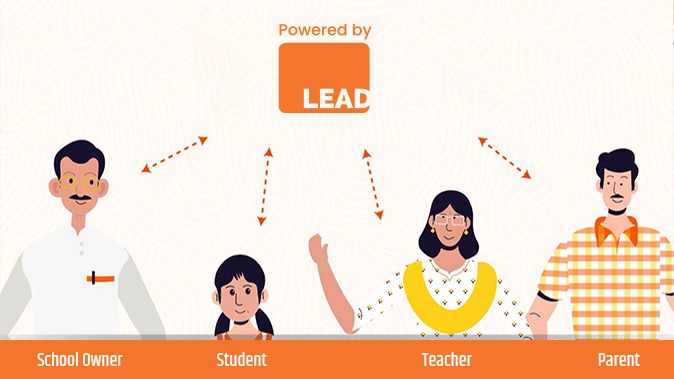Why innovative schools and education companies struggle?

Give Your School The Lead Advantage
Delivering long-lasting value education is a tough business, especially when it comes to doing it in the early years of a child. Parents have to provide their children with the knowledge, mindset, and skills to have a fulfilling life. Schools own the responsibility of making every child entering their doors at 7 AM an academic and career success. Education companies go to schools and parents with a promise of supporting them with their ambitions. The promise from a parent to the child, from the school to a parent, and from education companies to schools and parents is the value that we are going to talk about in this article.
What really is the value?
Despite ‘what is the right kind of education’ being among the hottest topics of the dinner table, there is not much consensus to the answer apart from ‘rote learning is bad. When you speak about ‘what should really be taught in school’, it opens a whole another Pandora’s box where you can keep digging and get nowhere. Parents, schools, and education companies alike face the same struggle daily. Determining what’s the right thing to teach, in what pedagogical style should it be taught, and how should it be delivered to students are the most important and toughest problems that each of these parties has to solve. And there seems to be no right answer to it. Currently, most schools and education companies seem to apply a diversification approach where they use a variety of approaches over a broad array of topics over an extended period. Similar to what a typical fund manager would get from a similar approach investing in capital markets, they often get the average outcome (or market-rate returns).
But is there a master approach or a significant alpha that is still to be found? The education leaders say ‘Yes’ and are ready to pilot unique approaches tailor-made to each subject and age group to arrive at an answer that works at scale. This process of conceptualising a product, piloting and refining it, and then taking it to scale is riddled with holes and is not everyone’s cup of tea. It, firstly, requires a massive amount of resources, secondly, needs to pass through the ecosystem’s scrutiny, and, finally, demands sustained and long-term cooperation from many different stakeholders in the system. There is plenty of literature in the business community on how to collect the required resources, hence, in this article, I am going to focus on the ecosystem issues peculiar to the education sector.
Let your school be a part of this unique revolution. To align your school’s mission with us today: Partner with us today
Passing the scrutiny of the stakeholders:

Hence, the conflict between your value proposition and the government policy framework and the demand for short-term exam-based results leads to most schools and companies trying to create a compromise that allows them to pass the scrutiny without diluting their original value proposition. This is a big risk. If you bend too much towards the government policy and exam results, you lose your uniqueness and hence fail in delivering the value that you originally set out to deliver. On the other side, if you do not bend enough, you fail the public scrutiny. Hence, the NEP 2020 has come as a boon for many education leaders as it sets a high-quality benchmark and relieves some of this pressure on the innovators to convince the system.
Keeping the system motivated:

This challenge, although universal, is particularly tougher for education businesses for two reasons: (i) There are quite a few stakeholders who have to be aligned with your program for your pilot to work. For example, as a school owner, between you and your end-consumer is the school academic coordinator, the teachers, and the parents; and (ii) since the consumer can not identify and articulate the impact themselves, the burden of proof falls entirely on to you.
It is easy to fail and fall into this trap. Imagine you have a science activity-based program that is geared to make students curious and critical thinkers of science. You believe that this can change the way science is taught in your school. You know that it’s going to take at least three to six months for students to experience this new program before they develop the curiosity and critical thinking skills that you have envisioned. For you to have a successful pilot, firstly, you’d have to convince the academic coordinator and the science teacher to implement it wholeheartedly for the next academic session without reverting to the earlier system. Then, you’d also have to convince the parents that they allow the teachers to exercise this new program. Finally, for all the stakeholders to remain motivated during the course, they would need constant motivation and some proof that the system is working and will produce results if continued. Any contrarian point of view can disrupt the process. For that, you’d have to find concrete ways to capture the small deltas in student’s curiosity and critical thinking skills in a way that all the stakeholders in the system can recognise and attribute to the new program. This is a particularly complex task since creating an evaluation matrix to capture the change in curiosity and critical thinking skills of a ten-year-old is a process in itself.
So can this be done? Some examples have shown ‘Yes’. With strong operations, aspirational and talented staff and a financial war-chest, this can be done. The key to success would be setting up a robust outcome evaluation system that is understood and recognised by all and a regular outcome demonstration process to keep all the stakeholders interested and motivated.
So as a K12 education leader, you have the work cut-out for yourself. The ones who’d do it successfully over time would emerge as winners. The winners in this market would enjoy an unrivalled position with a wealth of resources at their disposal. The large higher education institutions such as Harvard and Oxford University are the hallmarks of such success and have enjoyed this position for a few centuries now. The K12 education still doesn’t have winners that enjoy that level of prestige. There is a need and the market is open for grabs. Only time would tell which school system would become the global leader in this space.
Let your school be a part of this unique revolution. To align your school’s mission with us today: Partner with us today

